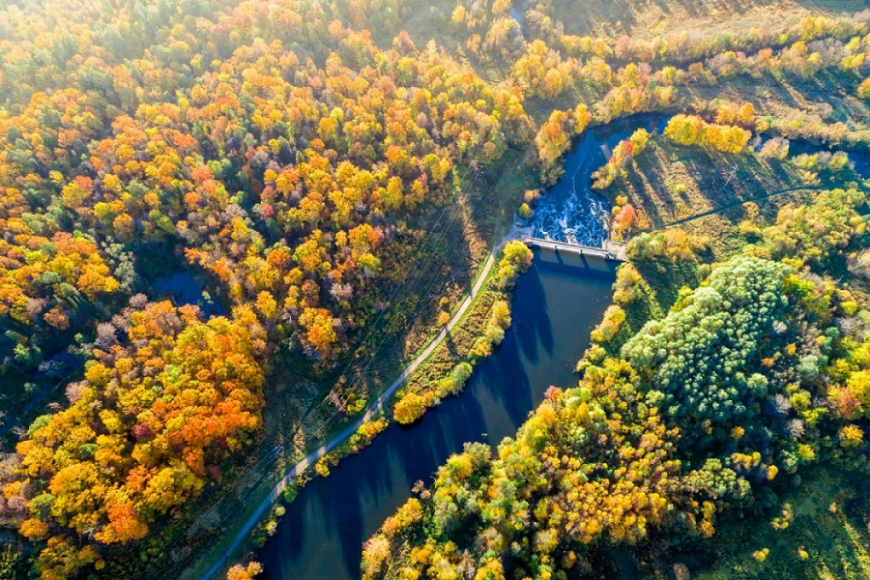In the newly volatile world of environmental regulations and water protections, what does it all mean for businesses?
When it comes to protecting our wetlands and rivers, regulations have often been framed around minimums and maximums. In the shifting regulatory landscape of today, however, those strict contaminant thresholds are changing due to federal changes and rollbacks to what many had felt was settled law.
Environmental regulations and agreements are typically scaled, organized, and enforced in one of three primary directions:
- Local regulations meet the needs and expectations of communities, regions, and states. Examples include rules related to stormwater management, septic system design and discharge, or controlled water use in regions where there is scarcity.
- National laws and rules protect resources that cross state or other jurisdictional boundaries. Examples include rules regarding discharge to rivers or air pollution.
- International agreements form around a common goal that transcends any local or national constraints. The Montreal Protocol and the Paris Climate Accord are examples of the global reach and international implications of these agreements.
While companies thought they had a grasp of water protection and sustainability regulations, now these regulations are being rolled back rather than continuing the 50-year trend of strengthening them. What does it mean for the business sector?
U.S. Environmental Regulations and Water Protections Rolled Back
During the Trump administration, nearly 100 environmental rules have been downscaled, including regulations for air pollution and emissions, drilling and extraction, infrastructure planning, toxic substances and safety, and water pollution. In that time, 58 rollbacks have been completed, with 37 still in process at the time of this writing. While these rollbacks are intended to make things easier for large corporations and the fossil fuel industry, there likely will be long-term ramifications from resulting increases in greenhouse gas emissions.
One particular rollback that has caused controversy in the environmental world is the repeal of portions of the Clean Water Act. This landmark Obama-era policy was enacted to afford smaller streams and wetlands the same protection as larger rivers and streams. President Trump’s repeal has gone beyond reversing the previous policy, effectively dismantling previous regulations that had been protecting smaller streams and wetlands since the 1970s.
When the Obama administration broadened the interpretation of the Clean Water Act, it did so with a hefty amount of scientific backing in support of the connection between the health of wetlands, smaller waterways, and larger bodies of water. With the regulatory rollback, half of the nation’s wetlands are now exempt from regulation, and thus subject to more development pressure and less regulatory oversight.
President Trump’s rollback is based on redefining which waters should be federally protected -- the new policy now excludes waterways that don't flow regularly and wetlands that aren’t immediately connected to the surface of larger waterways. The administration has justified its position by arguing that previous regulations infringed on farmers’ and businesses’ right to use their land as they saw fit.
Regardless of how individuals feel about private property rights, however, it’s difficult to argue that this rollback hasn’t opened the door to increased hazardous chemicals and corrosive runoff ending up in streams and wetlands.
The Need to Bridge the Gap Between Regulation and Action
Every environmental regulation rolled back or loosened is an active countermeasure against the Paris Agreement’s efforts to keep rising global temperatures within a 2°C target. Based on the WMO Statement on the State of the Global Climate in 2019, we are already far from achieving a sufficient rate of progress.
2019 temperatures were 1.1°C above the pre-industrial average and the year’s heatwaves and extended periods of drought contributed to wildfires of unmatched size. On top of that, the world has made little headway toward reducing greenhouse gas emissions by 45% from 2010 levels by 2030, so these effects are just the tip of the iceberg — one that sadly continues to melt.
According to the Environmental Rule of Law assessment from the United Nations Environment Programme (UNEP), all countries have drafted at least one environmental regulation. Yet, deforestation is happening at an alarming pace, extinction rates for plants and animals continue to spike, and temperatures remain on the rise.
The problem, according to the assessment, is that ministries tasked with making the necessary changes at an international level are often underfunded and politically weak compared to those responsible for economic growth. The laws in some countries often lack clear standards, defined mandates, or alignment with current political and environmental circumstances.
The way forward, according to the UN Secretary-General, is renewed leadership at all levels, across all sectors on priority areas of action in 2020. Only by marshalling the resolve and resources to truly change behavior can we meet our common goals.
What Should Companies Do?
Continuing to implement and follow robust environmental standards serves the best interests of the communities, regions, and countries where companies operate, and improves protections against environmental degradation and resource depletion -- both in preventing catastrophes and in providing for swift remediation when issues occur. Besides preserving resources and business continuity, this approach also supports a strong brand reputation and helps companies maintain their social license to operate in good standing.
So, what can you do when regulatory winds are constantly shifting?
- Stay the course: While water protection regulations have loosened, it’s essential that companies not back off of their environmental commitments — and not just because it’s the right thing to do. Being environmentally conscious matters to employees, customers, and other shareholders, and can pay off big for the bottom line. Plus, by staying the course, you’ll be better prepared for future regulations, which are all but certain to push back in the other direction.
- Seek ways to keep your waters clean: Exploring ways to use more eco-friendly materials in your procurement and manufacturing can help offset your company’s environmental footprint and keep the surrounding waters clean. A targeted, customized plan for improvement will also clearly communicate your company’s commitment to sustainability.
- Minimize your footprint in all relevant areas: Energy-efficient options for powering your business has come a long way in the last decade. Everything from solar panels to wind turbines to energy-efficient office lights can contribute to making your company more eco-friendly and reduce your energy bills.
No business can afford to be shortsighted for long. If more and more companies take ownership over their environmental footprint with confidence and transparency, the world won’t be reliant on the whims of lawmakers or changing administrative priorities to keep us on the path to long-term sustainability.
Learn how Antea Group helps businesses understand their sustainability opportunities and create and implement strategies for long-term resiliency and competitive advantage.
Want more news and insights like this?
Sign up for our monthly e-newsletter, The New Leaf. Our goal is to keep you updated, educated and even a bit entertained as it relates to all things EHS and sustainability.
Get e-NewsletterHave any questions?
Contact us to discuss your environment, health, safety and sustainability needs today.






